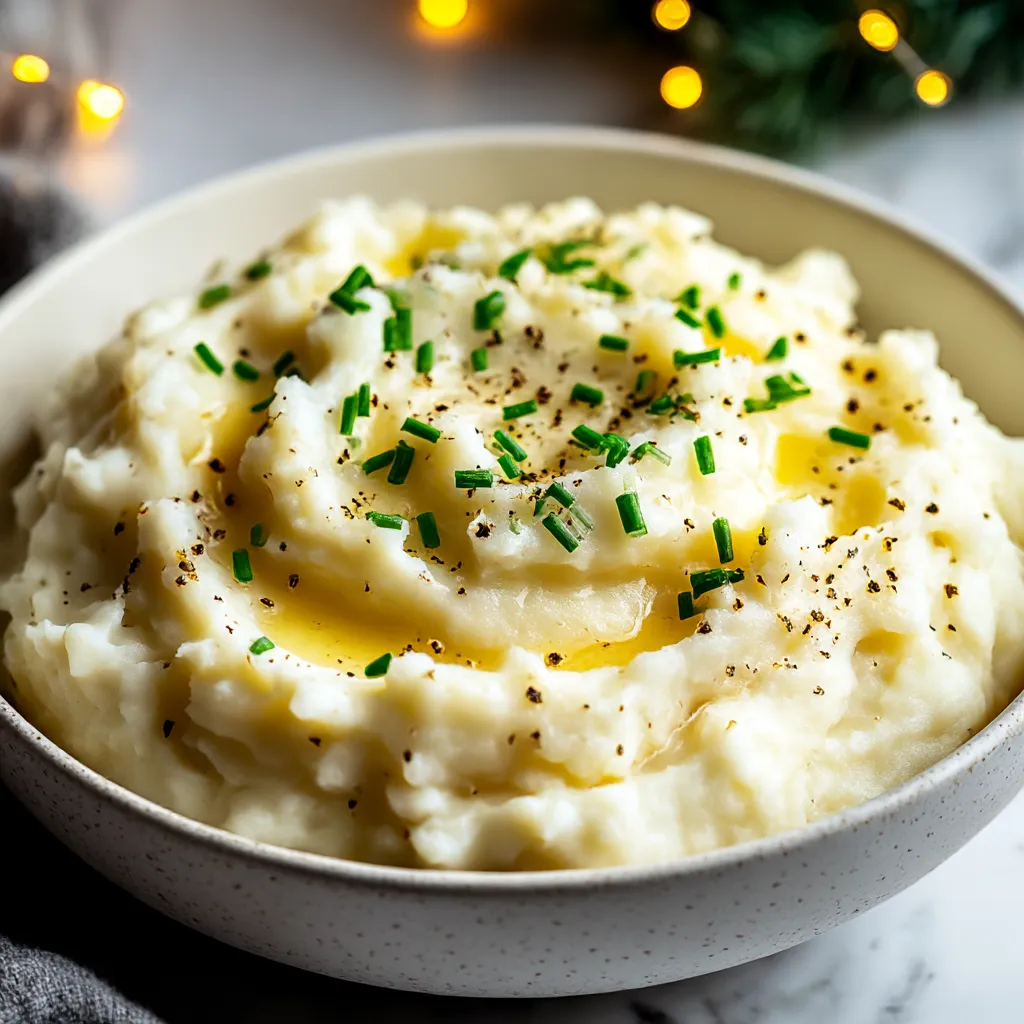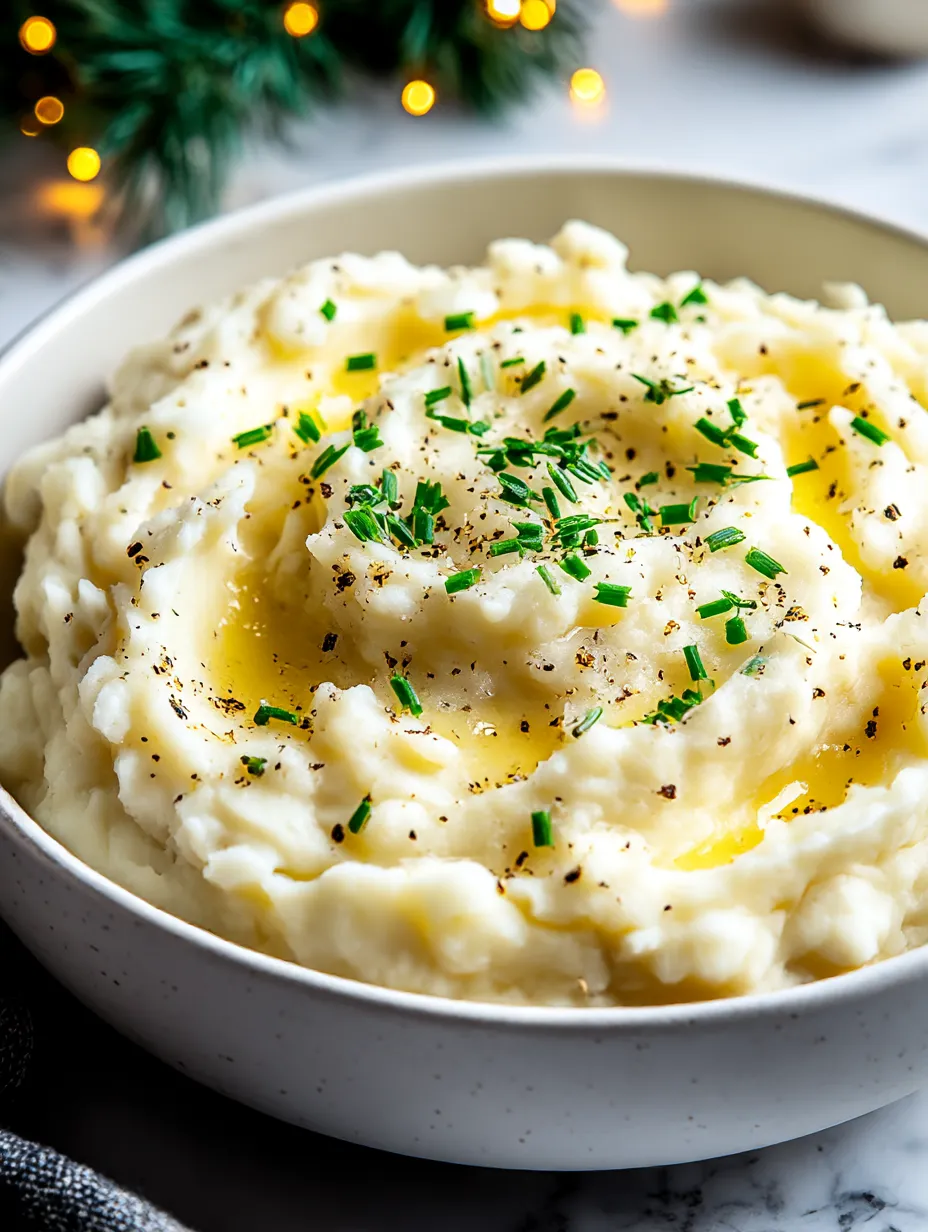 Save
Save
This creamy mashed potato recipe transforms humble potatoes into the ultimate comfort food. The secret lies in getting the perfect balance of butter and cream, creating a silky texture that melts in your mouth with every bite.
I first made these mashed potatoes for a holiday gathering when my oven broke down. They were such a hit that they've become my signature side dish, requested at every family dinner regardless of the season.
Ingredients
- Russet potatoes: Chosen specifically for their high starch content which creates the fluffiest texture
- Heavy cream: Provides richness that transforms ordinary potatoes into a luxurious side dish
- Butter: Adds velvety richness and helps create that irresistible mouthfeel
- Salt: Enhances all the flavors while freshly ground black pepper adds subtle warmth
- Fresh chives: Brighten the dish with color and a mild onion flavor
Step-by-Step Instructions
- Prepare the potatoes:
- Cut russets into uniform 1-inch cubes to ensure even cooking. Keeping the pieces consistent in size prevents some from becoming waterlogged while others remain undercooked.
- Boil properly:
- Place potatoes in cold salted water and bring to a boil rather than adding them to already boiling water. This cooking method allows them to cook evenly from the inside out.
- Drain thoroughly:
- After cooking for 15-20 minutes until fork tender let the potatoes sit in the colander for 2 minutes. This extra step allows excess moisture to evaporate resulting in fluffier potatoes.
- Add warm dairy:
- Never add cold cream and butter. Warming these ingredients first prevents cooling down the potatoes which can make them gummy and unappetizing.
- Mash with care:
- Use a potato masher or ricer for the best texture. Food processors or blenders break down too much starch creating a gluey consistency that ruins the dish.
- Season properly:
- Add salt and freshly ground pepper gradually tasting as you go. The right seasoning elevates the simple ingredients to something truly spectacular.
The cream is my nonnegotiable ingredient in this recipe. After trying countless variations I discovered that nothing compares to the silky richness that real heavy cream provides. My grandmother taught me this technique and insisted that taking this shortcut would be culinary sacrilege.
The Perfect Potato Selection
Russet potatoes truly are the gold standard for classic mashed potatoes. Their high starch and low moisture content creates that fluffy texture we all crave. While Yukon Golds make excellent mashed potatoes with a naturally buttery flavor russets absorb cream and butter better creating that cloud like consistency. For a truly luxurious version try a 50/50 mix of both varieties combining the best qualities of each.
Temperature Matters
Serving temperature dramatically affects the eating experience with mashed potatoes. They should be served hot immediately after preparation when the texture is at its creamiest. If you need to make them ahead warm them gently in a covered dish in a 300°F oven adding a splash of cream if needed to restore their silky texture. Never microwave mashed potatoes as this creates hot spots and dries out the edges.
Flavor Variations
Transform this classic recipe by incorporating roasted garlic folding in caramelized onions or adding grated Parmesan cheese. For an herbed version try mixing in fresh rosemary and thyme. Horseradish adds a surprising kick that pairs beautifully with beef dishes. The neutral potato base provides the perfect canvas for countless flavor combinations allowing you to customize based on your main dish or personal preference.

Recipe FAQs
- → How do I prevent lumpy mashed potatoes?
For smooth mashed potatoes, ensure potatoes are cooked until completely tender (a fork should easily pierce them). Drain thoroughly, then mash while still hot. Using a potato ricer or food mill gives the smoothest results. Add warm (not cold) cream and melted butter, and incorporate gradually while mashing.
- → Can I make mashed potatoes ahead of time?
Yes! Prepare up to 2 days ahead and refrigerate. When reheating, place in a covered dish in a 350°F oven for about 30 minutes, or microwave, adding a splash of cream or milk to restore creaminess. Stir occasionally during reheating.
- → What's the best potato variety for mashing?
Russet potatoes are ideal for mashing due to their high starch content, which creates fluffy, absorbent results. Yukon Gold potatoes are another excellent choice, offering a naturally buttery flavor and creamy texture. Avoid waxy potatoes like red potatoes, which can become gluey when mashed.
- → How can I add more flavor to my mashed potatoes?
Enhance flavor by boiling potatoes in chicken broth instead of water. Consider adding roasted garlic, sour cream, cream cheese, grated Parmesan, or herbs like rosemary or thyme. For richness, try browning the butter before adding it. A splash of white truffle oil creates a gourmet variation.
- → Why did my mashed potatoes turn out gluey?
Gluey mashed potatoes typically result from over-mixing, which releases too much starch. Avoid using food processors or blenders. Instead, use a hand masher, ricer, or stand mixer on low speed. Also, avoid overworking the potatoes after adding liquid ingredients.
- → How much salt should I add to the water when boiling potatoes?
Use approximately 1-2 tablespoons of salt per gallon of water. This seasons the potatoes from within as they cook, resulting in more flavorful mashed potatoes that require less salt added at the final seasoning stage.
